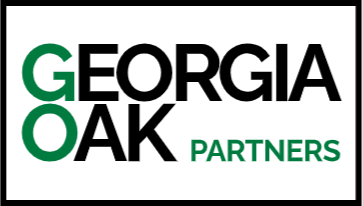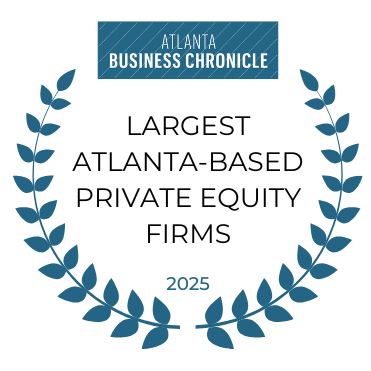Business Owner Resources
We’re committed to providing business owners with the best private equity experience possible. Part of that commitment is assisting founders in equipping themself with the proper tools to enter the selling process informed and prepared.
Post Sale Relationship
A glimpse into the second half of the selling process.

Additional Resources
PARTNERSHIP VIDEO
Watch how these values came to life with our investment in Sailfish Boats.
Building the People Who Build Your Product
By Dean Ditmar
I started my eight-year tenure at General Electric (GE) Plastics in 1997 as a Regional Sales Manager. Just two years prior, GE had introduced Six Sigma, the Motorola-inspired methodology for eliminating 99.99966% of defects in the manufacturing process. Although this process focuses on defects in manufacturing, it also opened my view to the importance of the people involved in the process—and how team dynamics could impact the customer experience.
I graduated college thinking I would be a mechanical engineer, but I felt a calling toward the “people side” of business pretty early on. Marrying the technical and the intangible seemed like the perfect challenge—a way to help two different sides of an organization by serving as a translator of sorts.
A few years into my tenure at GE Plastics, I became a certified black belt supporting "At the Customer, For the Customer" Six Sigma projects for a large region in the Southwest. Leading a team of six technical development managers, we supported over $40 million in revenue, including key accounts such as Dell, 3M, and Nokia. It was exciting. I was learning and growing—making mistakes and course-correcting as I went. But I dare say I made more than 3.4 defects per million decisions I made as a young leader.
Emphasizing process and perfection are admirable goals, but what I learned living through that time is that motivating people to believe and engage in change is even more crucial. Balancing these two forces has given me a great baseline and perspective on my approach to engaging with people and working through complex business issues.
Fast forward almost 25 years, everything I have learned along the way influences the work I do with Georgia Oak now—taking what serves individuals and organizations best and leaving the rest for the history books. One of my charges as an Operating Partner is to work alongside the management team at Georgia Oak’s partner company Sailfish Boats, a manufacturer of fiberglass recreational fishing boats. As we look at the pandemic-induced challenges all manufacturers face, some common themes are emerging, and hard-won lessons are crystalizing.
All Issues are People Issues
People and supply chains dominate most of the discussions I have these days. On the people side, the challenge is finding and retaining team members to support our core operations and accelerate our growth initiatives. We are seeing widespread shortages on the supply chain side—from simple items like nuts and bolts to complex parts like engines. These shortages and delays drive up prices and hamper our ability to respond to our customers, causing extended delays and lead times.
But when it comes down to it, our supply chain issues could be answered overnight, and that still wouldn’t solve all of our challenges. Trade requires people, and all issues are ultimately people issues. The real challenge is getting the right people in the right roles to keep the organization running efficiently.
While we certainly engage in more traditional routes of recruiting through digital platforms, networks, and executive search firms, depending on the roles we need to fill, we are also finding that we have to be faster and more responsive in our approaches to be successful. Our ability to construct competitive salary structures, differentiate with health benefits and other perks, and have a positive growth culture all contribute to our ability to compete in a tight labor market.
We are also making sure our current employees know about new job opportunities. We do this by posting every job in a highly visible area at the plant and encouraging managers to discuss these job openings with employees, as they could be opportunities to promote from within. Most notably, we are starting to see a greater influx of employee referrals that are helping us fill key positions. Also, it doesn’t hurt to have employees working with people they know and trust.
Mental Safety is Just as Important as Physical Safety
Surviving and thriving through the pandemic has been about creating a work environment with health and safety at the forefront. Manufacturing facilities simply don’t afford the same remote working flexibility as many industries today can, so it is doubly important that we communicate that the health and safety of our employees and families come first. We must give employees confidence that they can safely come to work.
We were proactive in letting people stay home due to illness with paid leave or get the necessary testing and treatments to help drive their confidence. Although we did have plant employees that contracted COVID-19, we were fortunate that we did not identify any positive COVID-19 cases from the work environment. We were very aggressive in our contact tracing and sent home employees based on exposure. We continue good discipline and use CDC guidelines throughout the manufacturing facility today, which is especially critical as new variants emerge and case volumes fluctuate. Overcoming these challenges together as a team has helped strengthen our culture and improve employee morale.
In light of the employee shortage and challenges in hiring, retaining existing employees has never been more essential. I’ve heard others say, “The best way to recruit is the keep the ones you’ve got.” The ability to look in the mirror and create a culture and work environment to achieve this is critical for bottom-line results.
I really feel employee satisfaction goes way beyond compensation or physical safety measures with today’s employees. Listening, engaging, and adapting to employees’ needs are critical measures for developing a stronger culture that fosters retention. Making people feel empowered and part of a team is a potent recipe for success and growth.
Regularly talking to each employee one-on-one, both on professional and personal levels, creates more connection, trust, and loyalty to the company and its leaders. If you create “belief” in how your employees engage in their jobs, you are making progress in driving long-term retention.
Your Best Employees Will Value Your Ability to Make Tough People Decisions
The level of engagement from leadership outlined above can also help you understand and address concerns of underperforming or poor culture fit employees more rapidly. Practicing discipline around this is a growing issue for all manufacturing operations today because many are already shorthanded. After going through the expense and long hiring cycle of finding an employee, it can be tough to admit that they may not be the right fit for your company culture or the job. However, the long-term damage of keeping mis-hires is much greater than cutting ties sooner—both for the employee and the business.
It is essential, though, not to immediately write off mis-hires as only the employee’s fault. Having good onboarding discipline and empowering your management team to be accountable for new employees will help quickly identify any issues, wherever they may be.
At the end of the day, you’re building a team, and those who don’t buy into the culture can and will drag down those trying with all their might to forge ahead. Retaining your top performers is as much about making tough decisions about mis-hires as it is about directly supporting and properly compensating those you wish to keep and promote.
I am passionate in my belief that customer satisfaction starts with employee satisfaction. No good employee wants to work alongside someone who doesn’t carry their weight or brings a negative attitude to the job.
We Can’t Six Sigma Our Way Out of a Pandemic
As much as we may try, there is no such thing as eliminating all defects from the process of managing a business. Some things, like global pandemics, will always be out of our control. But with the benefit of experience, we can see each day as an opportunity to better serve our employees, customers, and communities.
At Georgia Oak, we’re committed to enhancing your business and helping founders grow their legacies
to their fullest potential. If you find we’re a good fit for your next step, please reach out to us.



